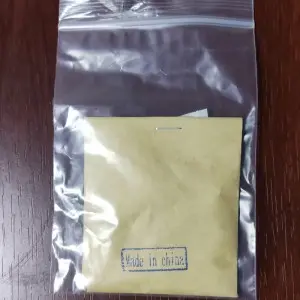Aug . 14, 2024 09:41 Back to list
Exploring Diverse Suppliers for Effective Apple Pollination Methods and Techniques in Agriculture
Apple Pollination Methods and Suppliers Ensuring a Bountiful Harvest
Apple cultivation is a significant agricultural endeavor worldwide, with millions of tons produced each year to satisfy the demand for this popular fruit. Essential to the successful production of apples is the process of pollination, which ensures the fertilization of flowers and the subsequent development of fruit. Understanding the methods of apple pollination and the suppliers that facilitate this process is crucial for farmers aiming to enhance their yield and quality.
The Importance of Pollination in Apple Cultivation
Pollination is a vital step in the reproductive cycle of apple trees. Apple blossoms are generally hermaphroditic, containing both male and female reproductive structures; however, they often require cross-pollination with another cultivar to produce fruit effectively. This process enhances genetic diversity, leading to better fruit quality and resistance to diseases. Various pollination methods can be employed to maximize fruit set, including the use of honeybees, bumblebees, and other pollinators, as well as manual pollination techniques.
Natural Pollination with Bees
One of the most widely recognized methods of apple pollination involves the use of honeybees (Apis mellifera). These insects are attracted to apple flowers by their scent and color and play a pivotal role in transferring pollen from one blossom to another. To ensure an adequate bee population during the blooming period, apple growers often introduce beehives into their orchards. Additionally, fostering a bee-friendly environment by planting diverse flora can attract and maintain wild bee populations, further enhancing pollination rates.
Bumblebees (Bombus spp.) are also effective pollinators for apple trees, particularly in cooler temperatures when honeybees are less active. Their ability to buzz pollinate by vibrating their bodies while visiting flowers allows them to access pollen that may be otherwise out of reach. Incorporating bumblebee habitats or utilizing commercial bumblebee colonies can significantly boost pollination efficacy.
Manual Pollination Techniques
apple pollination method suppliers

In some cases, especially in regions where natural pollinator populations may be limited, manual pollination becomes a viable alternative. This method involves hand-pollinating flowers using tools such as small brushes or cotton swabs to transfer pollen from the anthers of one flower to the stigma of another. While labor-intensive, manual pollination can be a reliable method in greenhouse conditions or for smaller orchards where ensuring fruit set is critical.
Selecting Pollination Suppliers
To achieve optimal pollination, apple growers often seek suppliers who can provide pollination services or products. Companies specializing in beekeeping may offer rental services for honeybee hives during the flowering season. These services ensure that farmers have adequate pollinator presence in their orchards, which is especially important for large-scale operations.
Moreover, suppliers of bumblebee colonies have emerged, providing another pollination option. These suppliers ensure that bumblebee hives are healthy and ready for deployment in apple orchards, giving growers a strategic advantage in pollination efforts.
For those interested in manual pollination, various agricultural supply stores offer tools and resources that facilitate the process. Providing training on effective manual pollination techniques can also be an invaluable resource for growers.
Conclusion
Effective pollination is critical to successful apple cultivation, and understanding the various methods and suppliers available is essential for maximizing fruit production. By leveraging natural pollinators like honeybees and bumblebees or employing manual pollination techniques, apple growers can ensure a fruitful harvest. Engaging with reliable suppliers who offer pollination services and products can further enhance the chances of achieving quality fruit yield, ultimately contributing to the sustainability and profitability of apple farming. As the demand for apples continues to grow, the emphasis on efficient pollination methods will play a vital role in the future of apple production.
-
Pollen Peach Tree for Pure Pollination and High-Quality Peach Pollen
NewsJul.30,2025
-
Premium Cherry Pollen for Pure Pollination & Different Types
NewsJul.30,2025
-
Artificial Pollination Solutions for Various Plant Pollen Types
NewsJul.29,2025
-
Artificial Pollination Solutions for All Plant Pollen Types
NewsJul.29,2025
-
Premium Plant Pollen for Pure Pollination & Pollen Block Solutions
NewsJul.29,2025
-
Artificial Pollination Solutions for Efficient Crop Yields
NewsJul.28,2025